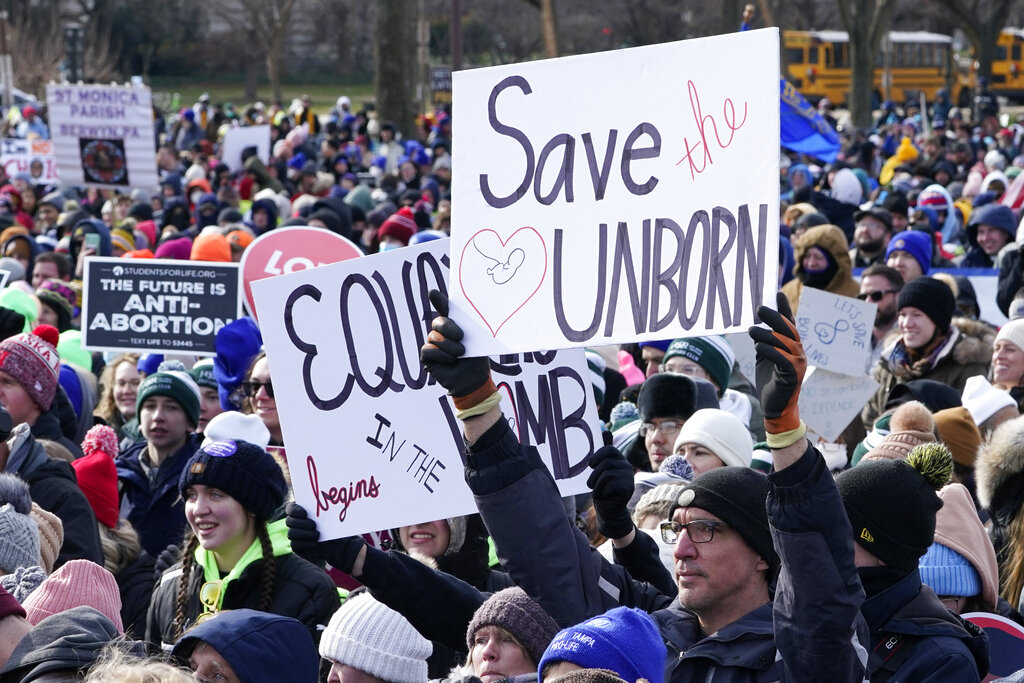For decades or it is better if we say for centuries “abortion” has always been an important matter of political disputes and big legislation challenges; however, going back in time leaders and then politicians didn’t outlaw abortion in America until the mid-1800s
At current, among the ones who are fighting over this issue, there are two groups of people. We have “Pro-choice” who support women’s right to choose and decide for their bodies, and we also have “Pro-life” who support the ban on abortion; both of these groups have their fair share of supporters as well
The Rise of Laws Banning Abortion in the U.S
Starting around the time of the Civil War, a coalition of male doctors — with the support of the Catholic Church and others who wanted to control women’s bodies — led a movement to push state governments to outlaw abortion across the board. The male-dominated medical profession wanted to take authority from the female-dominated profession of midwives, including the authority to provide abortion. Let’s go through a short timeline of the status of abortion throughout American history
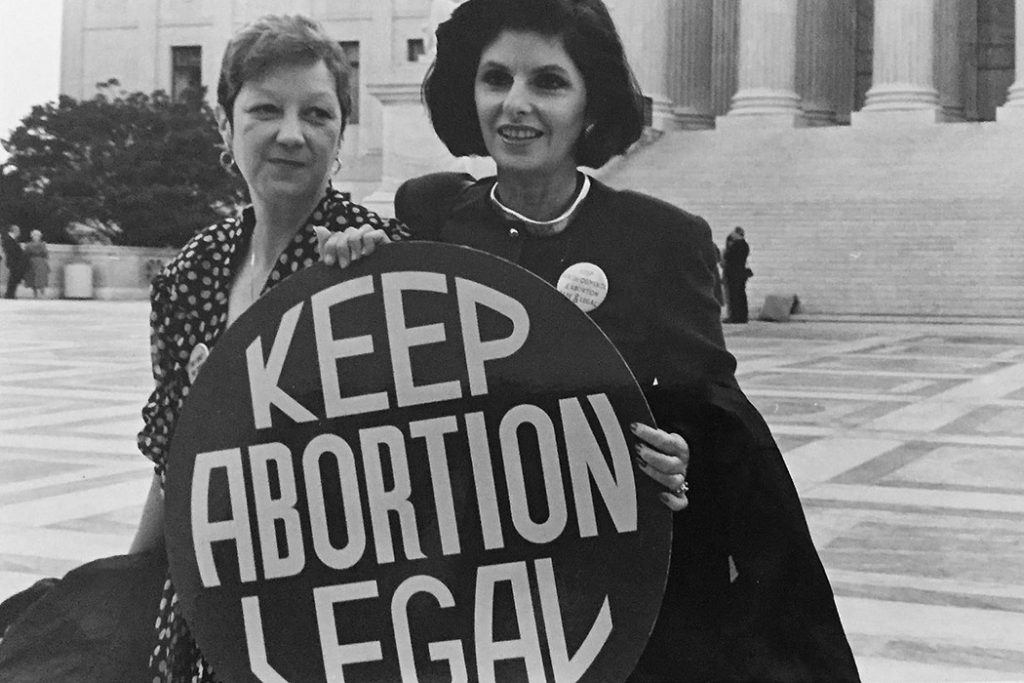
The formation of the American Medical Association in 1847
An association where its members believed they should have the power to decide when an abortion could be legally performed
The 1880s: Criminalization and Vilification
By 1880, all states had laws to restrict abortion — with exceptions in some states if a doctor said the abortion was needed to save the life or health of the patient, or for therapeutic reasons. As abortion became criminalized, the stigma surrounding it grew
Abortion Bans Nationwide
By 1910, abortion was not only restricted but outright illegal at every stage of pregnancy in every state in the country. These abortion bans had some exceptions in instances to save the patient’s life — a decision that only doctors, 95% of whom were men, had the power to make
1964: Association for the Study of Abortion (ASA)
In 1964, abortion law reform activists registered their first national group: the Association for the Study of Abortion (ASA). Planned Parenthood joined doctors and laypeople leading the ASA in advocating for abortion law reforms and for studies that would advance abortion procedure safety
1969 NARAL Established in
The National Association for the Repeal of Abortion Laws (NARAL) was established in Chicago at the First National Conference on Abortion Laws. It was the first national group created solely to campaign for the legalization of abortion, marking the start of direct action to repeal abortion bans
The late 1960s and early 1970s: Abortion Reform
By the late 1960s, a nationwide effort was underway to reform abortion laws in nearly every state
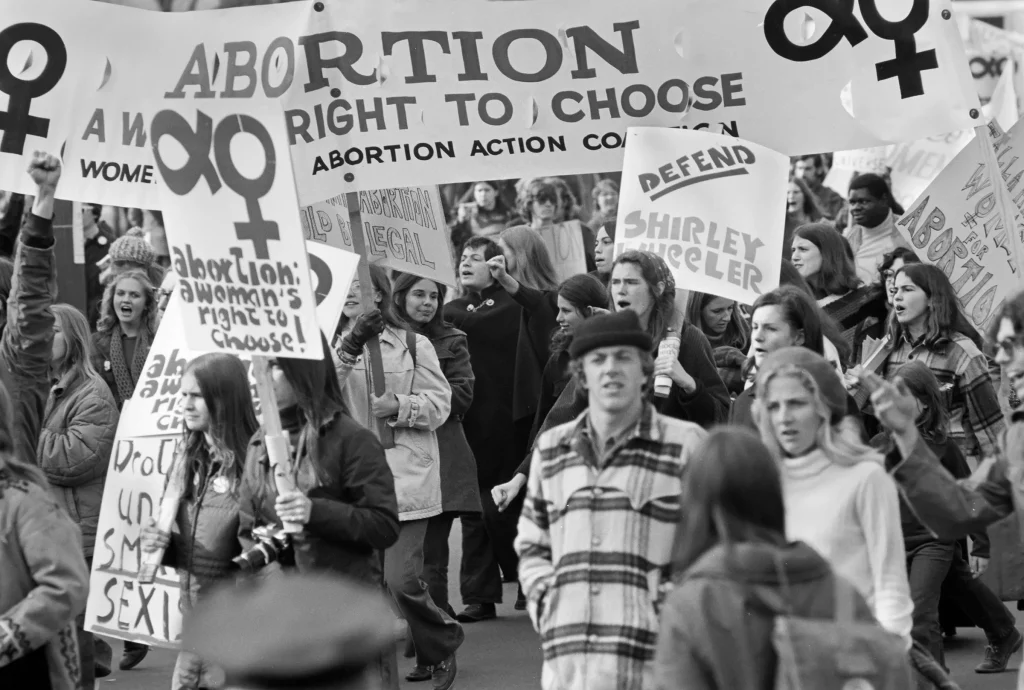
Abortion legalized in New York in 1970
In 1970, New York was the first state that legalized abortion
1973, Roe v. Wade
In a landmark decision, the U.S. Supreme Court ruled that the due process clause of the 14th Amendment to the Constitution protects the right to abortion. Roe v. Wade protected the right to abortion in all 50 states, making abortion services safer and more accessible throughout the country
Roe v. Wade, (1973), was a verdict of the U.S. Supreme Court in which the Court ruled that the Constitution of the United States protects a pregnant woman’s liberty to choose to have an abortion without excessive government restriction. The decision struck down many U.S. federal and state abortion laws. Roe fueled an ongoing abortion debate in the United States about whether, or to what extent, abortion should be legal, who should decide the legality of abortion and the role of moral and religious views in the political sphere. It also shaped debate concerning which methods the Supreme Court should use in constitutional adjudication.
The decision involved the case of Norma McCorvey—known by the legal pseudonym “Jane Roe”—who in 1969 became pregnant with her third child. McCorvey wanted an abortion but lived in Texas, where abortion was illegal except when necessary to save the mother’s life. Her attorneys, Sarah Weddington and Linda Coffee filed a lawsuit on her behalf in U.S. federal court against her local district attorney, Henry Wade, alleging that Texas’s abortion laws were unconstitutional. A three-judge panel of the U.S. District Court for the Northern District of Texas heard the case and ruled in her favor. Yet the District Court ruled against two others who were also represented by Weddington and Coffee alongside McCorvey. Weddington and Coffee appealed their partial loss to the U.S. Supreme Court, while at the same time Wade cross-appealed his partial loss to the Supreme Court
In January 1973, the Supreme Court issued a 7–2 decision in McCorvey’s favor ruling that the Due Process Clause of the Fourteenth Amendment to the United States Constitution provides a “right to privacy” that protects a pregnant woman’s right to choose whether to have an abortion
The Court resolved this balancing test by tying state regulation of abortion to the three trimesters of pregnancy: during the first trimester, governments could not prohibit abortions at all; during the second trimester, governments could require reasonable health regulations; during the third trimester, abortions could be prohibited entirely so long as the laws contained exceptions for cases when they were necessary to save the life or health of the mother
The Court classified the right to choose to have an abortion as “fundamental”, which required courts to evaluate challenged abortion laws under the “strict scrutiny” standard, which is the highest level of judicial review in the United States
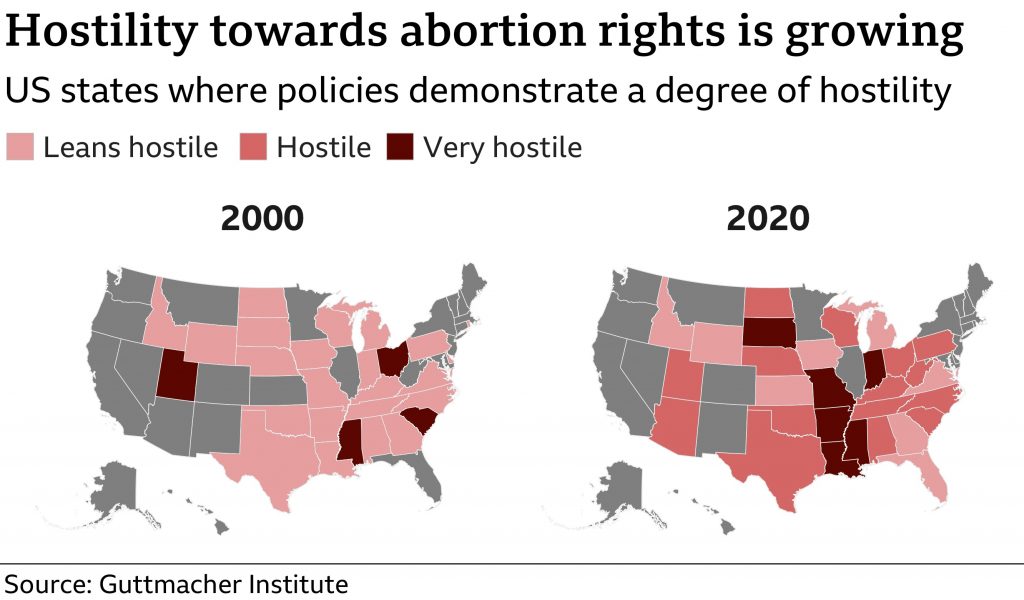
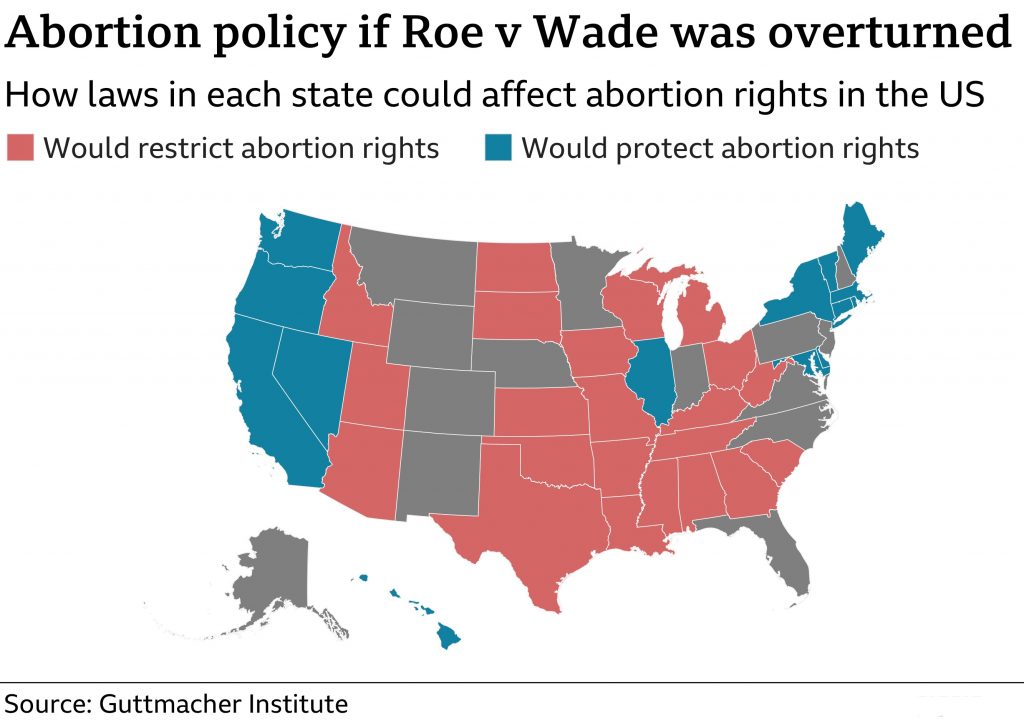
Now, on May 2, 2022, Politico news agency obtained a leaked initial draft majority opinion penned by Justice Samuel Alito indicating that the Supreme Court is prepared to overturn Roe and Casey in a pending final decision on Dobbs v. Jackson Women’s Health Organization, expected to be issued by June 2022. A press release from Chief Justice John Roberts the following day confirmed the authenticity of the leaked document, but stated that the draft “does not represent a decision by the Court or the final position of any member on the issues in the case
Research and studies show that from 2000 until now the opposition to abortion legalization has risen. As was mentioned above, according to “Roe.v.Wade” any woman has access to abortion within the first trimester, and then it gets limited in the second 3 months of pregnancy, any given way it is considered a constitutional right of an American woman. So by overturning this case, abortion will exit from being a constitutional and guaranteed right to first being banned in 22 states and then giving the choice of legalizing it to each state
Coming into politics, abortion has always been a matter of gaining more public support in elections. The American Democrats support “Abortion” and the Republicans oppose it. Furthermore, on May the 11th the “Roe.v.Wade” decision was taken to the U.S. Senate and was voted against. This plan had previously been accepted in the U.S. Congress, however, the Democrats had failed to gain 60 votes out of 100 in favor of this deal. Since this, protests have been going on throughout America non-stop in appealing this decision and demanding a reconsideration for this issue
Not forget to mention that despite all these protests happening, on the 26th of May the governor of Oklahoma state signed into law the strictest abortion ban in the US, making his state the first to in effect end all access to the procedure. The law prohibits abortions with exceptions to save the life of a woman or if the pregnancy is the result of rape or incest reported to law enforcement. The law does not apply to the use of morning-after pills such as Plan B or any type of contraception

